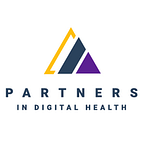Maximizing VA remote patient monitoring during the COVID-19 response
Abstract
Objective: The Veterans Health Administration (VHA) has one of the largest remote patient monitoring programs in the United States and is supported by an enterprise-wide infrastructure for providers, clinicians, staff, Veterans, and caregivers. The coronavirus disease 2019 (COVID-19) pandemic, however, presented new challenges: a sudden need to provide large-scale remote monitoring for a new disease that did not yet have a disease management protocol (DMP). Veterans Health Administration (VHA) needed to be ready within weeks to provide this daily monitoring for hundreds — even thousands — of Veterans.
Methods: The US Department of Veterans Affairs Office of Connected Care already had a comprehensive infrastructure in place for its remote patient monitoring — Home Telehealth (RPM — HT) program. Connected Care activated and built on this infrastructure to support providers, clinicians, and staff in their efforts to rapidly bring RPM — HT to Veterans across the nation when they had COVID-19 symptoms or exposure. To do this, Connected Care activated an emergency management plan, rapidly developed a new COVID-19-specific DMP, added weekend monitoring, and procured critically needed monitoring supplies, such as thermometers and pulse oximeters. The strong foundation for Connected Care allowed for innovation and flexibility, such as the training of non-RPM — HT staff in RPM — HT processes, RPM — HT enrollment within acute care settings, and new strategic partnerships.
Outcomes: More than 23,500 Veterans were enrolled for COVID-19-related monitoring from March 2020 to May 2021. During December 2020 and January 2021, the number of Veterans being monitored in a single day topped 2,000. Even with this rapid buildup, patient satisfaction levels remained at about 90% in numerous categories. In addition, the percentage of Veterans admitted to Veterans Administration (VA) facilities while on COVID-19-related home monitoring has been extremely low, at 4%, the monitoring system has been a potential indicator in enabling Veterans who did have the virus to convalesce at home. Further study is needed to determine the impact RPM — HT enrollment for COVID-19 care had on the need for inpatient care.
Conclusion? Read here: https://doi.org/10.30953/tmt.v6.281
Authors
- Catherine Buck Remote Patient Monitoring — Home Telehealth, US Department of Veterans Affairs, Office of Connected Care
- Rita F. Kobb VA Office of Connected Care Quality and Training Division, US Department of Veterans Affairs, Office of Connected Care, Quality and Training Division https://orcid.org/0000-0003-0616-739X
- Ron Sandreth Remote Patient Monitoring — Home Telehealth, US Department of Veterans Affairs, Office of Connected Care
- Lisa Alexander Remote Patient Monitoring — Home Telehealth, US Department of Veterans Affairs, Office of Connected Care, Quality and Training Division
- Sherron Olliff Remote Patient Monitoring — Home Telehealth, US Department of Veterans Affairs, Office of Connected Care, Quality and Training Division
- Carol Westfall Disease Management Protocol (DMP) Oversight, US Department of Veterans Affairs, Office of Connected Care, Quality and Training Division
- Carla L. Anderson US Department of Veterans Affairs, Office of Connected Care, Quality and Training Division
- A. Laurie Graaff Telehealth Emergency Management Program, US Department of Veterans Affairs, Office of Connected Care, Quality and Training Division
- Joseph Giovannucci Telehealth Program, Denver Logistics Center (DLC), US Department of Veterans Affairs, Office of Acquisition and Logistics
- Aszur Rollins US Department of Veterans Affairs, Office of Healthcare Transformation
Originally published at https://telehealthandmedicinetoday.com.
